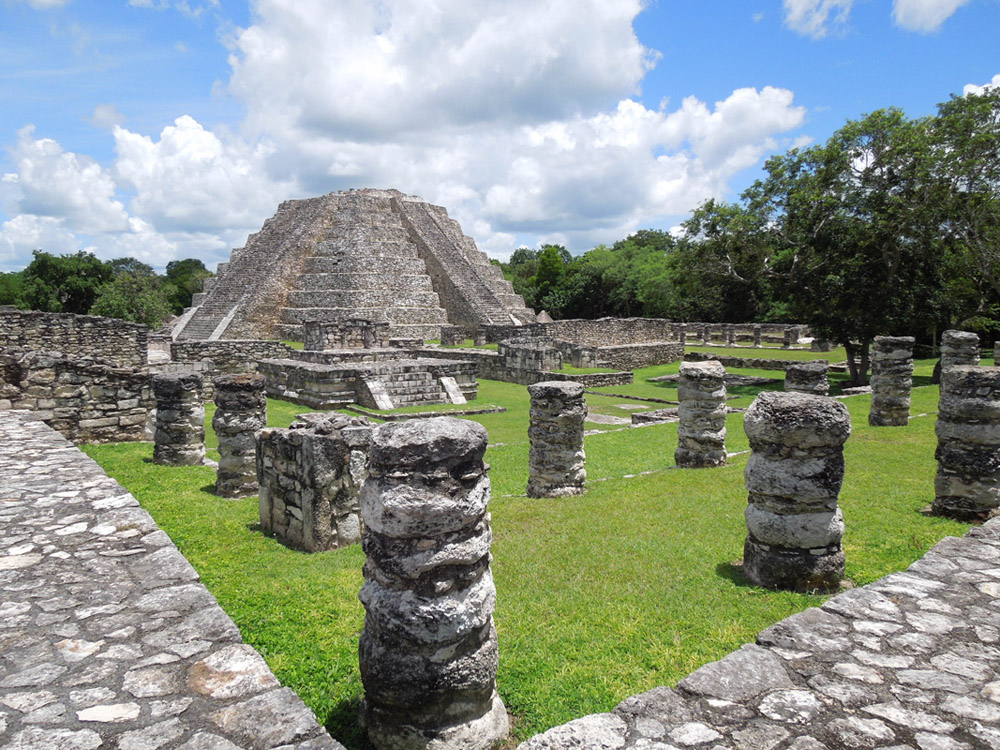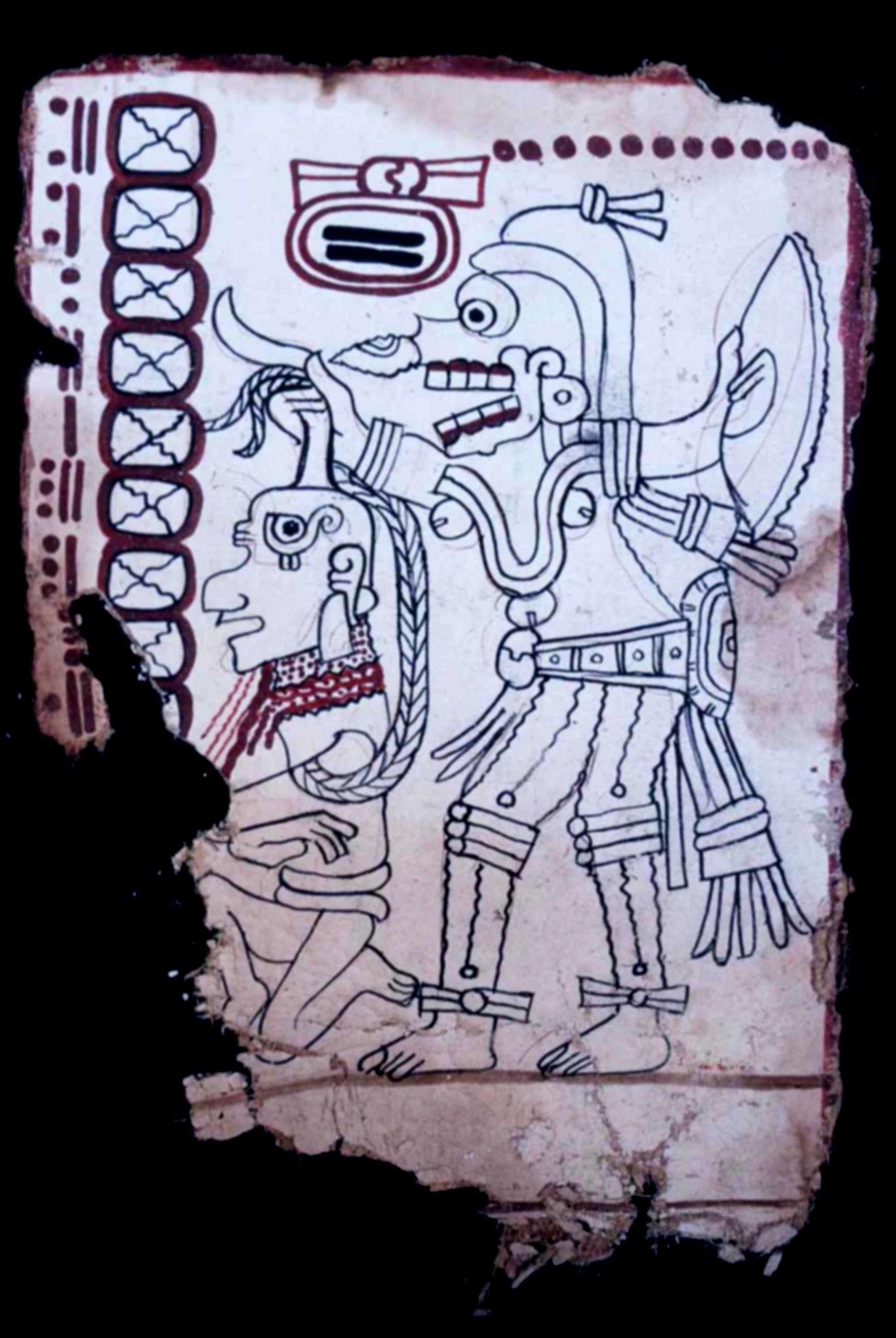The Maya codices: Only these 4 books remain from the lost empire

- The Maya had a complex writing system, the evidence of which was destroyed by Spanish colonizers.
- Four surviving codices contain illustrations of deities and calendars keeping track of cosmic time.
- Long in decline, aspects of Maya culture are slowly resurfacing in Mesoamerica.
At their height, the Maya were one of the largest and most powerful civilizations of pre-Columbian Mesoamerica, presiding over an empire that spanned from modern-day Mexico down to Belize, Guatemala, and parts of Honduras. Much of what we know about the Maya comes not from their architecture or artifacts, but from their writing.
Of the 15 or so Mesoamerican writing systems that modern scholars know of, the Maya system is the most complex and best preserved. Maya hieroglyphs — visually distinct from their Egyptian analogs — were inscribed on the walls of temples, palaces, and pyramids; on monuments, ceramics, and effigies made from wood and bone; and in codices (rudimentary manuscripts) made of bark paper and deer skin.
Maya hieroglyphs, like Maya culture at large, virtually disappeared after the arrival of Spanish conquistadores in the 16th century. After Hernán Cortés and Pedro de Alvarado had subjugated the Maya, Spanish priests like Diego de Landa attempted to convert them to Christianity by burning idols, books, and any other items carrying information related to their “pagan” religion.

Of the thousands of texts believed to have been produced over the course of Maya history, only four (the Madrid, Paris, Grolier, and Dresden Codices) survived the colonization. They were shipped to Europe along with other looted materials, where they eventually ended up in the custody of public libraries. Today, the codices allow us to look at the Maya through their own eyes.
Translating hieroglyphs
Although Western scholars have had access to samples of Maya hieroglyphs for centuries, they only managed to decipher the writing system in the 1980s. It turns out that this system is logosyllabic, meaning that some glyphs represent an entire word — for instance, the image of a jaguar head could mean jaguar — while others represent syllables, like “ba” or “ku.”
Glyphs representing syllables and individual words were combined to form phrases and expressions. These typically took the form of square blocks which, arranged in double columns, were read from left to right and top to bottom, not unlike the English language. While there are more than 1,000 different hieroglyphs, the Maya generally only used between 300 and 500 of those at any given point in their history.
Our newfound understanding of Maya hieroglyphs has allowed researchers to discover that the so-called Madrid Codex — thought to have been written in Mexico’s Yucatán Peninsula but named after the European city where it resurfaced — contains information about agriculture, beekeeping, hunting, killing war prisoners, and rituals associated with Chaac, the Maya god of rain, thunder, and lightning.
Similarly, we know that the Paris Codex – used by the Maya at the time of the Conquest and likely produced in the Maya capital of Mayapan, again located on the Yucatán Peninsula, around 1450 – speaks of dates, deities, and constellations. A section believed to describe chapters of Maya history has yet to be translated, possibly because roughly 15% of all Maya glyphs remain undecipherable.
The Grolier Codex
The third of the Maya codices, the Grolier Codex, owes its name to an eponymous society of bibliophiles based in New York City. Allegedly acquired from looters who found it in a cave in Mexico, the authenticity of the manuscript was questioned by archeologists like Maya scholar J. Eric S. Thompson until a thorough analysis in Maya Archeology showed it wasn’t just legitimate, but also the oldest of the four codices.
Archeologist and Grolier Club member Michael D. Coe thinks the scribes of the codex, made between 900 and 1250, were influenced by the Toltecs, a pre-Columbian culture of central Mexico preceding the Aztecs. The evidence includes the text’s unique style of illustration, which features Toltec as opposed to Maya spear-throwing levers, and representations of “death gods” that match those found in Toltec archeological sites.

The Grolier Codex contains both tables and almanacs, two distinct ways in which the Maya kept track of time. Tables record what researchers call the Long Count, an astronomical time cycle that lasts 2,880,000 days and began in 3114 BC. Almanacs used across Mesoamerica operate according to a 260-day calendar, and are used to identify holidays and seasonal events such as harvests.
Compared to other manuscripts, the Grolier Codex features simpler grammar and shorter texts – qualities which have led some researchers to suggest that it is a “scaled-down” version of other, more comprehensive books, designed specifically for people with limited reading and writing skills. The primary purpose of the codex wasn’t to tell stories, but to tell readers what day it was.
Books of prophecy
Until recently, the Dresden Codex was believed to be the oldest of the four manuscripts. Dated to the 11th or 12th century, it is said to have been taken from Yucatán to Europe by none other than Cortés himself. Initially gifted to the Holy Roman Emperor Charles V, it was acquired in 1739 by the Royal Library of Dresden, where it remains to this day.
Although the Dresden Codex sustained water damage during the Second World War, it’s still the best preserved of the four manuscripts. Researchers believe the contents on its 39 leaves — tables, almanacs, hieroglyphs, and 400 partly colored drawings — were copied from an older Maya book. Its last four leaves were left blank, suggesting the codex was unfinished when it left Mesoamerica.
The Dresden Codex is a book about prophecy. An almanac based on the K’atun cycle (7,200 days) is accompanied by a drawing of a battle the Maya feared would take place at the end of each cycle. A catastrophic flood originating from two glyphs representing eclipses fills up a whole page. Down at the bottom, a black god with a screeching owl on its head — the “ruler of the underworld” — holds two spears and a sling.
For a culture obsessed with calamity, the Maya were surprisingly playful in their writing. In one inscription, the name of a god named “Mirror Scepter” is written backward. In another, the image of a nobleman peeks through an opening in the glyph for “lord.” This playfulness is also exhibited in the Dresden Codex, where the order of certain glyph blocks is reversed without distorting their meaning. “A late expression,” Edwin L. Barnhart writes, “of the Maya’s love of variation on a theme.”
The past rewritten
The story of Maya hieroglyphs is full of irony. Although the Spanish colonizers bear responsibility for the writing system’s extinction in the 16th century, historians note that it had already fallen out of use by the time of their arrival. Similarly, while De Landa ordered the burning of Maya books, his notes on those books have helped researchers reassemble the culture he tried to tear apart.

While the written language of the Maya died out, variations of their spoken language survived through numerous indigenous groups from Central and South America. Today these languages are under the threat of cultural assimilation, with an increasing number of indigenous people exchanging their native tongues in favor of Spanish to avoid racism and chase economic opportunity.
Fortunately, this threat has been accompanied by a resurgence in ethnic pride and political activism. In 2019, the Congress of Yucatán state approved a law that would require Mayan language instruction in primary and secondary schools. Although the law has yet to be implemented, it gives reason to hope that aspects of this ancient culture will live on for centuries to come.





